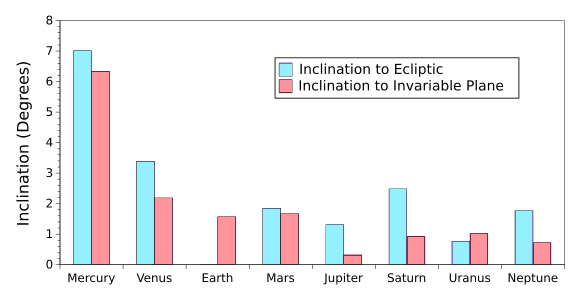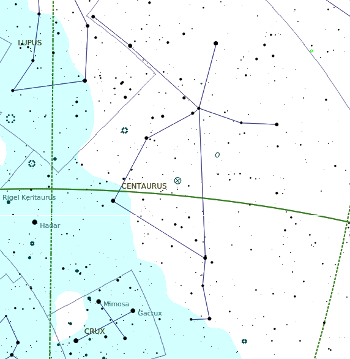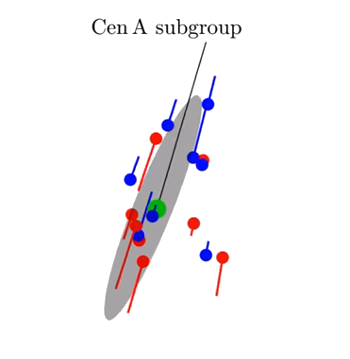The Puzzle of Centaurus A
April 2, 2018
Many
children of
elementary school age are able to recite the names of the
planets of our
Solar System. They're also too young to bemoan
the demotion of Pluto in 2006 from the ranks of the planets to a mere
dwarf planet. The
god,
Pluto, the
king of the
underworld, for whom the planet was named, might have a special place reserved for the members of the
International Astronomical Union who approved this change.
.png)
Divine retribution, as exemplified by the eternal punishment of Sisyphus (Σισυφος).
Sisyphus, who boasted that he was more clever than the king of the gods, Zeus, was punished by being forced to eternally roll a huge boulder up a hill.
The boulder would always roll back to the bottom just before reaching the top.
The Greek spelling of Sisyphus, Σισυφος, demonstrates the three ways that the Greek letter, sigma, is written.
(A 1655 engraving by Cornelis Bloemaert (1603-ca.1684), via Wikimedia Commons)
The
orbits of the eight planets of our Solar System are closely aligned in a
plane called the
invariable plane.
Earth's orbit is inclined just 1.57° to this plane, and the orbital plane of the Earth is called the
ecliptic. The orbits of the other planets are quite close to the invariant plane, and also to the ecliptic. As a consequence, the planets all follow about the same path through the sky. This confinement of the planets to such a plane is the likely consequence of the
origin of the Solar System from a
protoplanetary disk from which the planets
condensed.

Inclinations of the planets to the ecliptic and the invariable plane. (Created using Gnumeric)
The structure of Our Milky Way galaxy mimics what's seen in our Solar System. The many stars of our galaxy orbit in a plane around the supposed
supermassive black hole at its center. Massive galaxies, such as our own Milky Way galaxy, have associated
satellite galaxies that orbit about them. The standard
dark energy plus cold
dark matter cosmological model, called the
ΛCDM model, predicts that these satellite galaxies should orbit not in a plane, but
randomly about their host galaxy. The ΛCDM model is highly successful in predicting the
accelerating expansion of the universe, as well as its galactic structure.
However, the satellite galaxies of our Milky Way and the neighboring
Andromeda Galaxy orbit their host galaxies roughly in a plane. That's why observations of the motions of satellite galaxies are important, and that was a task undertaken by an international team of
astronomers from the
Universität Basel (Basel, Switzerland), the
University of California (Irvine, California), the
Australian National University (Canberra, Australia), and the
European Southern Observatory (ESO, Garching bei München, Germany). They discovered that the satellite galaxies of
Centaurus A, the largest galactic system in the vicinity of the Milky Way, are found to orbit in a coherent direction in a plane, a fact that is inconsistent with
computer simulations using the ΛCDM model.

The galaxy, Centaurus A, is in the constellation, Centaurus, near Crux, the Southern Cross.
(Created using KStars. Click for larger image.)
These observations of the Centaurus A system are significant, since Centaurus A is more isolated in
space than either the Milky Way or Andromeda, so confounding
gravitational influences are more likely to be absent. So, what could cause this unexpected observation? Since the ΛCDM model makes very nice
predictions, most astronomers are unwilling to discard it so readily. Satellite galaxies may form during the
collision of two larger galaxies, which might account for planar orbits.[4,6] It might be that the distribution of dark matter in our vicinity is unexpectedly different from that of the universe in general. One of the few possible replacements of the ΛCDM model would be a modification of the
law of gravitation, an unlikely scenario.

Planar motion of the satellite galaxies of Centaurus A.
These satellites corotate in a narrow plane, with 14 of the 16 following a coherent velocity pattern aligned with the long axis of their spatial distribution.
Cosmological simulations predict that this would happen in less than 0.5% of Centaurus A–like systems.[1,2,5]
(Still image from a YouTube Video by the Universität Basel.[7])
Steven Weinberg, is quoted in
Science as writing, "
Physics thrives on
crisis."[3,8] Observations like these that are contrary to the predictions of the ΛCDM model might be a crisis that results in some new physics. At this point, however, the evidence is just
anecdotal, so more work remains.
References:
- Oliver Müller, Marcel S. Pawlowski, Helmut Jerjen, and Federico Lelli, "A whirling plane of satellite galaxies around Centaurus A challenges cold dark matter cosmology," Science, vol. 359, no. 6375 (February 2, 2018), pp. 534-537, DOI: 10.1126/science.aao1858.
- Oliver Müller, Marcel S. Pawlowski, Helmut Jerjen, and Federico Lelli, "A whirling plane of satellite galaxies around Centaurus A challenges cold dark matter cosmology," arXiv, January 31, 2018.
- Michael Boylan-Kolchin, "Perspective-Galaxy motions cause trouble for cosmology," Science, vol. 359, no. 6375 (February 2, 2018), pp. 520-521, DOI: 10.1126/science.aar7375.
- Astronomy: A rotating system of satellite galaxies raises questions, University of Basel Press Release, February 1, 2018. (German language version)
- Surprise: Satellite galaxies of Centaurus A are on a coordinated dance, American Association for the Advancement of Science Press Release, February 1, 2018.
- Amina Khan, "Galaxies that move together have cosmologists stumped about dark matter," Pittsburgh Post-Gazette, February 2, 2018.
- A whirling plane of satellite galaxies around Centaurus A, YouTube Video by the Universität Basel/Oliver Müller, February 1, 2018.
- Steven Weinberg, "The cosmological constant problem," Rev. Mod. Phys., vol. 61, no. 1 (January - March 1989), DOI:https://doi.org/10.1103/RevModPhys.61.1.
Linked Keywords: Child; children; elementary school; planet; Solar System; IAU definition of planet; the demotion of Pluto in 2006; dwarf planet; deity; god; Pluto (mythology); monarch; king; Greek underworld; International Astronomical Union; divine retribution; eternity; eternal; punishment; Sisyphus; boasting; boast; boulder; hill; Greek language; spelling; letter; sigma; engraving; Cornelis Bloemaert (1603-ca.1684); Wikimedia Commons; orbit; plane; invariable plane; Earth's orbit; ecliptic; formation and evolution of the Solar System; origin of the Solar System; protoplanetary disk; condensation; condense; orbital inclination; planet; Gnumeric; supermassive black hole; satellite galaxy; dark energy; dark matter; physical cosmology; cosmological model; Lambda-CDM model; ΛCDM model; randomness; randomly; accelerating expansion of the universe; Andromeda Galaxy; astronomer; Universität Basel (Basel, Switzerland); University of California (Irvine, California); Australian National University (Canberra, Australia); European Southern Observatory (ESO, Garching bei München, Germany); Centaurus A; computer simulation; constellation; Centaurus; Crux, the Southern Cross; KStars; space; gravitation; gravitational; prediction; collision; Newton%27s law of universal gravitation; law of gravitation; rotation; corotate; velocity; YouTube Video; Steven Weinberg; Science (Journal); Physics; crisis; anecdotal evidence.